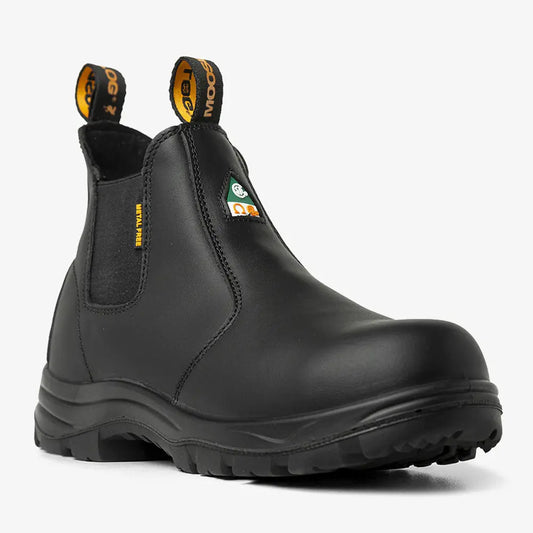What Is a Composite Toe Boot? A Complete Beginner’s Guide
Composite toe boots are safety footwear designed with non-metal materials that protect your toes from impact and compression injuries. Unlike traditional steel toe boots, composite toes are made from materials such as Kevlar, carbon fiber, fiberglass, or plastic. This makes them lighter, non-conductive, and often more comfortable for all-day wear.
Composite toe boots meet the same safety standards required by many workplaces, including CSA Z195 in Canada and ASTM F2413 in the United States. They're a top choice for workers who need reliable protection in environments where metal-free footwear is required.
Key Features of Composite Toe Boots
- Lightweight Design
Because they’re made from advanced non-metallic materials, composite toe boots weigh significantly less than steel toe boots. This helps reduce fatigue, especially for those on their feet all day.
- Non-Metallic & Non-Conductive
Composite toes do not conduct electricity or heat, making them ideal for electricians, airport personnel, and extreme temperatures.
- Metal Detector Friendly
If you work in high-security areas like airports, government buildings, or shipping hubs, composite toe boots won’t trigger metal detectors—making them extremely practical.
- Certified Protection
Even though they’re lighter, composite toes provide strong impact and compression protection. Look for certifications like:
- CSA Z195 (Canada)
- ASTM F2413 (USA)
Common Industries That Use Composite Toe Boots
- Construction & Light Trades
- Electrical & Utility Work
- Warehousing & Logistics
- Transportation & Aviation
- Manufacturing
These boots are especially useful in workplaces where metal isn’t allowed or where long hours on foot require more comfort and breathability.
Composite Toe vs. Steel Toe: Which One Is Better?
While both toe types offer certified safety, the choice depends on your job and comfort needs.
| Feature | Composite Toe | Steel Toe |
|---|---|---|
| Weight | Lighter | Heavier |
| Conductivity | Non-conductive | Conducts electricity & temperature |
| Security-Friendly | ✅ | ❌ |
| Cost | Slightly higher | Often lower |
| Strength | Comparable | High |
Read our in-depth comparison here
Care Tips for Your Composite Toe Boots
- Always check your boots for wear or damage after long use.
- Clean them regularly to maintain material integrity.
- Replace them if the toe cap becomes exposed or compromised.
FAQ: Composite Toe Boots
Q1: Are composite toe boots CSA certified?
Yes. MooseLog composite toe boots are certified under ASTM F2413-24 (US Standards) and CSA Z195 for Canadian standards.
Q2: Do composite toe boots set off metal detectors?
No, composite toe boots are made from non-metal materials and are ideal for metal-free work environments.
Q3: Are they as safe as steel toe boots?
Yes, MooseLog composite toe boots pass the same impact and compression tests as steel toe boots and provide equivalent safety levels.
Q4: Can I wear composite toe boots in winter?
Yes. They don’t conduct cold like steel, making them more comfortable in low temperatures.
Conclusion: Is Composite Toe Right for You?
If you're looking for protective footwear that’s lightweight, comfortable, and metal-free, composite toe boots are an excellent choice. Whether you're working in logistics, aviation, or electrical settings, these boots offer certified safety without sacrificing mobility or comfort.






